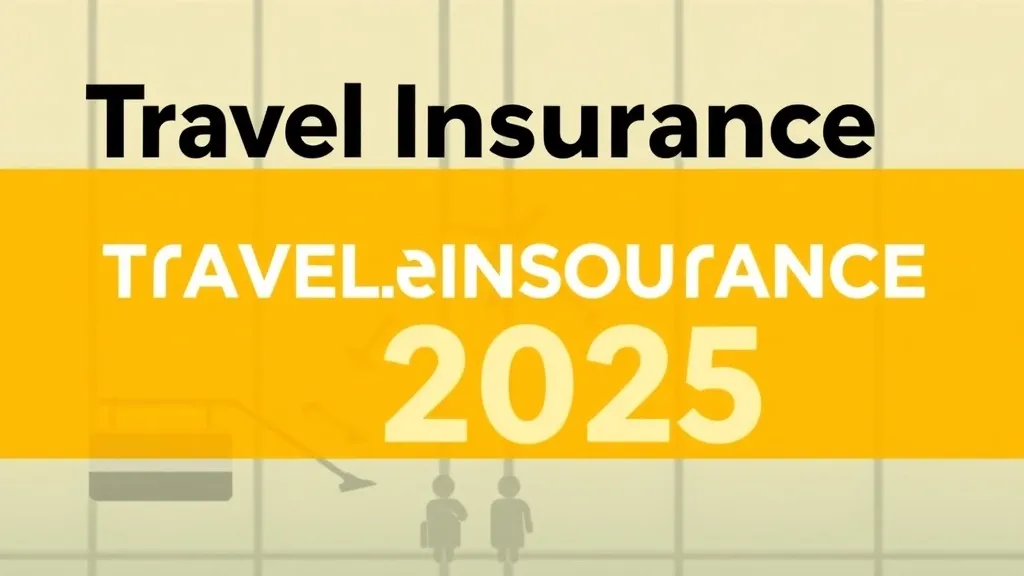Travel Insurance Comparison for 2025
Here’s the thing: planning a trip can feel like balancing on a tightrope—you’re thrilled, but one misstep (like a medical emergency abroad) could cost a fortune. If you’re searching for travel insurance comparison, you deserve clear, honest advice. Surprisingly, 63% of U.S. travelers remain uninsured for their 2025 trips (Upgraded Points). You’re not alone if you’ve felt overwhelmed by fine print and premium variations. Over the next few minutes, you’ll learn how to compare policies, spot hidden benefits, and pick a plan tailored to your journey. Ready for peace of mind? Let’s dive in.
Agree: No one wants sticker shock mid-vacation. Promise: By the end, you’ll master the art of travel insurance comparison for 2025. Preview: We’ll explore why comparison matters, key coverage types, cost factors, comparison tools, and future trends. Simple as that. Check out our compare travel insurance policies guide to hit the ground running.
Table of Contents
Why Compare Travel Insurance in 2025?
Imagine arriving overseas only to discover your medical bill is sky-high. That’s a nightmare scenario. With the global travel insurance market valued at $30.77 billion in 2025 and growing at a projected 16.8% CAGR through 2029 (CoinLaw), competition is fierce—meaning there’s a policy out there that fits your exact needs.
Travelers compare policies to avoid overpaying, to secure the right coverage, and to ensure smooth claims processing. After all, 70% cite medical emergencies as their top concern (Squaremouth). Have you ever wondered why two plans with similar premiums can differ so drastically in coverages?
Case Study: A retiree on a cruise opted for basic cancellation coverage only to realize his emergency medical evacuation wasn’t covered—resulting in a $20,000 bill when he slipped on deck. Ouch.
“Medical concerns are rising, as 4 of the 5 most sought-after travel insurance benefits are health-related,” notes Squaremouth.
Actionable Takeaway: List your top three concerns (medical, trip cancellation, adventure activities). Use that list as a checklist when comparing policies.
Key Coverage Types to Consider
Let me explain why coverage variety matters. Not every plan protects you against every risk. In fact, standard policies often exclude high-risk activities or weather-related delays.
Here are the main coverage categories:
- Emergency medical and evacuation
- Trip cancellation and interruption
- Weather and natural disaster delays
- Adventure or sports coverage
- Baggage loss and theft
For instance, adventure travel insurance policies have seen a 10% growth, as many standard plans exclude activities like skiing or scuba diving (Squaremouth). Plus, hurricane-related coverage is up 39% year over year (Upgraded Points). If flexibility is key, consider a cancel-for-any-reason travel insurance add-on (CFAR).
Have you checked whether your policy excludes your planned activities? If not, it’s time to dig into the fine print.
“Price transparency and ease of claim processing are top priorities for 82% of customers, driving digital sales growth,” reports CoinLaw.
Actionable Takeaway: Match coverage types to your itinerary. Don’t pay for baggage insurance if you’re traveling with carry-on only.
Cost Factors and Demographics
Price isn’t just a number. It reflects risk assessments based on age, destination, and trip length. For example, seniors pay an average of $450 for a 15-day trip, while millennials pay about $179 (Squaremouth).
Millennials are the most uninsured demographic (65% uninsured), possibly due to budget constraints or overconfidence (Upgraded Points). Meanwhile, travelers with higher incomes tend to opt for comprehensive plans. Seniors can explore our travel insurance for seniors resource for tailored insights.
Weather-related delays can spike costs too. A 2025 survey shows a 39% increase in searches for weather coverage—especially in hurricane-prone regions (Squaremouth).
- Trip length: Longer trips = higher premiums
- Destination risk: Adventure hotspots cost more
- Age bracket: Older travelers pay more
- Coverage limits: Higher limits = higher rates
Actionable Takeaway: Use a comparison tool and input your exact trip details—don’t rely on quotes for generic trips.
How to Use a Travel Insurance Comparison Tool
Have you tried one of those online comparison tools yet? They’re fast, transparent, and often free. Simply enter your trip dates, destinations, and desired coverages. Then watch the tool rank plans by price and rating.
Context matters—tools differ in database size, filters, and user reviews. Some platforms even let you sort by digital-first insurers or eco-conscious providers (5% of policies cater to this niche, as sustainability rises in importance (CoinLaw)).
Example: Using a popular comparison site, a family of four traveling to Europe saw premiums range from $300 to $800. By filtering for a CFAR add-on and high medical limits, they nailed down a $520 policy that covered all bases.
“Despite rising travel costs, 63% of travelers remain uninsured for 2025 trips, highlighting a divide in risk tolerance,” explains Upgraded Points.
Actionable Takeaway: Bookmark at least two comparison websites. Cross-check results to catch any discrepancies.
Future Trends and Advanced Tips
The bottom line is that digital sales will dominate. In 2023, 75% of policies sold online—and that number is climbing (CoinLaw). But what’s next?
Watch for these emerging trends:
- Increased CFAR adoption (20% in 2023, likely higher in 2025)
- Tailored adventure travel packages
- Integration with travel booking platforms
- AI-powered claim processing
- Green insurance options for eco-travelers
Advanced travelers also hedge by buying secondary policies or specialty plans for high-risk activities. It’s a bit like layering security—one policy for medical, another for gear and adventure.
Actionable Takeaway: Consider a multi-policy approach if your trip involves extreme sports or high-value equipment.
Frequently Asked Questions
Q: What is the cheapest way to compare travel insurance?
A: Use online comparison tools and filter by essential coverages; avoid add-ons you won’t use.
Q: How much does travel insurance cost on average?
A: About $311 for a 15-day trip in 2025, though location and age can shift this figure significantly.
Q: Do I need travel insurance for domestic trips?
A: It depends on your health coverage and trip length. Many policies are tailored for international travel.
Q: What does CFAR mean?
A: CFAR stands for “Cancel for Any Reason,” an add-on that lets you cancel your trip without standard policy restrictions.
Q: Can I buy insurance after booking?
A: Yes. But buying within 14 days of your initial trip payment unlocks full pre-existing condition waivers.
Conclusion
Comparing travel insurance for 2025 doesn’t have to be a chore. By focusing on your top risks, understanding key coverage types, and leveraging online tools, you can lock in a plan that blends value with peace of mind. First, outline your needs—medical, cancellation, adventure. Next, run at least two comparison searches with exact trip details. Finally, review policy documents for exclusions and claim processes. With these steps, you’ll transform from an overwhelmed shopper into a confident buyer. Safe travels and may your adventures be worry-free with the right coverage in place.
Ready to compare policies? Start now and secure your next trip against the unexpected. Travel insurance comparison is your ticket to stress-free exploration.





